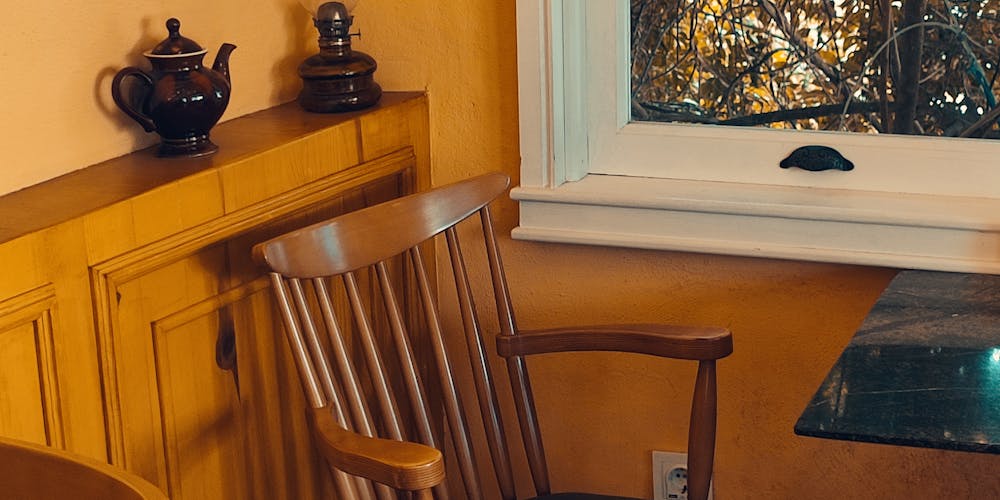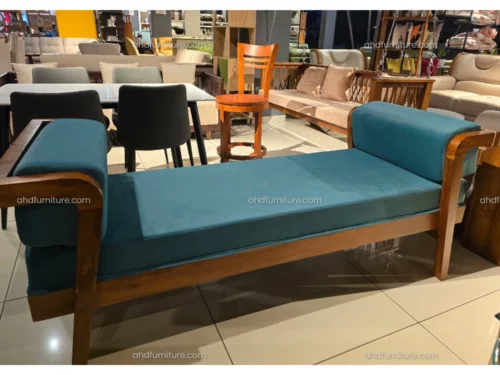When it comes to heritage and elegance, few pieces of furniture can rival the charm of a teak wood diwan. This versatile piece serves not just as a seating option but also as a statement of style, tradition, and comfort. The use of teak wood—known for its durability and beauty—only enhances the aesthetic appeal of this timeless furniture.
The Timeless Elegance of Teak Wood Diwans

The teak wood diwan is more than just a functional item; it’s an embodiment of cultural significance and artistry that has spanned generations. Originating from India, diwans were historically used for receiving guests and social gatherings, making them an essential aspect of hospitality in Indian culture. As we delve into the history and craftsmanship of teak wood diwans, we will explore their design, maintenance, costs, and why they continue to be a coveted choice in modern homes.
Historical Significance of Diwans in Indian Culture
Diwans have held a significant place in Indian households for centuries. Their roots stretch back to ancient times when they served multiple purposes, from being a resting place to a platform for storytelling and discussions. In traditional Indian architecture, the diwan was often placed in the central courtyard or living area, acting as a focal point where families would gather to enjoy each other’s company.
The significance of the diwan goes beyond mere functionality; it symbolizes the warmth and hospitality inherent in Indian culture. It invites guests to sit and feel at home. The artistic designs and intricate carvings on traditional diwans reflect the craftsmanship of artisans who poured their skills and creativity into creating these beautiful pieces of furniture.
Moreover, the diwan has evolved over time to reflect changes in lifestyle and preferences, while still retaining its core essence. Today, you can find contemporary versions that blend seamlessly with modern decor without losing touch with their historical roots.
Overview of Teak Wood as a Furniture Material
Teak wood, known scientifically as Tectona grandis, is one of the most sought-after materials for furniture-making globally. Its rich golden-brown hue, combined with a natural sheen, makes it visually appealing and fundamentally strong. Teak’s unique properties make it ideal for crafting high-quality furniture.
One of the reasons teak wood is so prized is its ability to withstand the elements. Naturally oily, it resists moisture, insects, and decay, making it an excellent choice for both indoor and outdoor furniture. When treated properly, teak wood maintains its integrity for decades, ensuring your investment stands the test of time.
In addition to its physical characteristics, teak wood carries an intrinsic value that resonates with those who appreciate sustainable choices. Sourced responsibly, teak is often harvested from managed forests, promoting ecological balance while providing stunning timber for furniture that respects nature.
Advantages of Choosing Teak Wood for Diwans
Opting for a teak wood diwan has numerous advantages that go beyond aesthetics.
First and foremost is durability. Unlike other types of wood, teak can endure wear and tear better, thanks to its dense grain that naturally repels water and pests. Thus, a diwan made of teak can last for generations, making it a wise long-term investment.
Another advantage is its low maintenance requirements. With minimal upkeep, a teak wood diwan retains its beauty over the years. Regular dusting and occasional oiling are usually sufficient to keep it looking pristine. Furthermore, as teak ages, it develops a beautiful silver-gray patina that many homeowners find desirable.
Lastly, the versatility of teak wood allows it to complement various interior styles, from traditional to contemporary. Its warm tones harmonize well with different color palettes and textures, making it easier to incorporate into any space. Whether you’re designing a rustic retreat or a sleek modern apartment, a teak wood diwan can enhance your home’s ambiance effortlessly.
Design and Aesthetics of Teak Wood Diwans

A teak wood diwan is not just about utility; it’s a centerpiece that can elevate the entire look of a room. When choosing a diwan, understanding the design and aesthetic aspects is crucial.
Traditional vs. Contemporary Designs
Traditional teak wood diwans are characterized by intricately carved legs and backrests, showcasing the craftsmanship of skilled artisans. These designs often feature floral motifs, lattice work, and ornate embellishments that tell stories of rich cultural heritage. Such pieces are perfect for those looking to add a touch of vintage charm to their interiors.
On the other hand, contemporary designs lean toward minimalism and clean lines. They often forego excessive ornamentation in favor of sleek profiles and functional forms. Such diwans can serve as multipurpose furniture, easily convertible into beds or storage units, adapting seamlessly to the needs of modern living.
Regardless of design preference, both styles emphasize the natural beauty of teak wood, allowing the grain and texture to take center stage. Your choice ultimately hinges on your personal taste and the overall aesthetic of your home.
Customization Options for Teak Wood Diwans
One of the great advantages of investing in a teak wood diwan is the opportunity for customization. Many artisans and manufacturers offer bespoke services, allowing you to specify dimensions, finishes, and details that suit your needs.
For instance, if you have limited space, you can opt for smaller, tailored designs that fit perfectly into your home without sacrificing comfort or style. Additionally, customizing the finish can significantly alter the appearance of the diwan; whether you prefer a polished look or a distressed finish, the possibilities are nearly limitless.
Engaging in customization also provides a deeper connection to your furniture. You’re not just purchasing a piece off the shelf; you’re investing in something designed specifically for you—a reflection of your personality and lifestyle.
Color Variations and Finishes Available
Teak wood naturally ranges in color from light golden hues to darker browns, offering a warm and inviting aesthetic. While many prefer to leave teak in its natural state, various finishes can enhance its appearance even further.
Oil finishes are popular among teak enthusiasts, as they nourish the wood and bring out its rich colors while preserving its natural character. Varnish offers a high-gloss finish that provides added protection against scratches and spills.
Stains can also alter the color of teak wood, allowing homeowners to match their diwan with existing furniture or decor. Whether you prefer a light honey tone or a rich, dark chocolate shade, there’s a finish that will suit your vision.
Durability and Maintenance of Teak Wood Diwans

Purchasing a teak wood diwan is an investment in longevity. Understanding how to care for and maintain this beautiful piece ensures its durability and continued aesthetic appeal.
Longevity of Teak Wood Furniture
Teak wood is renowned for its incredible lifespan. Tables, chairs, and diwans crafted from this premium wood can last several decades, showing little sign of age. This remarkable durability stems from teak’s natural oils, which repel moisture and resist decay, making it a favored material for both indoor and outdoor applications.
When properly maintained, teak furniture can maintain its structural integrity and beauty for generations. This means less frequent replacement and a lower environmental impact, making teak an eco-friendly choice for conscientious consumers.
Recommended Cleaning and Care Practices
Though teak wood requires minimal maintenance, following certain care practices will prolong its life and preserve its natural beauty. Regularly dusting the surface with a soft cloth helps prevent the buildup of dirt and grime. If needed, mild soap and water can be used for deeper cleans, followed by thorough drying to prevent moisture retention.
For outdoor teak furniture, consider applying a protective sealant to keep it free from the elements, especially if exposed to harsh weather. Additionally, storing your teak diwan in a sheltered area during extreme conditions can extend its longevity.
While teak is generally resistant to scratches, keeping sharp objects away from its surface is advisable. For minor dings or scratches, fine-grit sandpaper can help smoothen uneven areas, restoring its flawless finish.
Addressing Common Concerns Related to Teak Wood
Despite its many advantages, some consumers express concerns about the sourcing of teak wood and potential environmental impacts. It’s essential to purchase teak from reputable suppliers who practice sustainable harvesting methods. Look for certifications like the Forest Stewardship Council (FSC), which indicate that the wood has been sourced responsibly.
Additionally, some homeowners worry about the cost of teak wood furniture. While it may initially seem expensive compared to other materials, its longevity and minimal maintenance costs make it a financially sound investment over time.
Finally, potential buyers often wonder about the aging process of teak wood. While it will develop a gray patina when exposed to sunlight, many people appreciate this change, viewing it as a natural evolution rather than deterioration. Regular maintenance can retain its original color longer, should that be your preference.
Cost Considerations

Investing in a teak wood diwan involves understanding various factors that influence its pricing.
Factors Affecting the Price of Teak Wood Diwans
The price of teak wood furniture can vary widely based on several factors. First, the quality of teak plays a significant role; high-grade, mature teak commands higher prices due to its superior durability and aesthetic appeal.
Craftsmanship is another critical element affecting price. Handcrafted pieces often come with a premium, reflecting the skill and time involved in their creation. Mass-produced options, while typically more affordable, may lack the uniqueness and artistry of custom-made items.
Size impacts pricing as well, with larger diwans requiring more wood and labor to construct. Lastly, the inclusion of decorative elements—such as intricate carvings or unique finishes—can add to the overall cost.
Comparing Investment: Teak Wood vs. Other Materials
When considering the investment in a teak wood diwan, it can be beneficial to compare it with other common furniture materials. While alternatives like pine or laminate may come at a lower upfront cost, they often lack the same longevity and resilience as teak.
Pinewood, for example, is softer and more susceptible to dents and scratches, leading to a shorter lifespan. Additionally, synthetic materials may require replacement after a few years, whereas teak can last a lifetime, proving to be a more economical choice in the long run.
Ultimately, the initial investment in teak can yield tremendous returns in terms of durability and aesthetic appeal, making it a smart choice for discerning homeowners.
Where to Purchase Quality Teak Wood Diwans
When looking to invest in a quality teak wood diwan, sourcing from reputable dealers is essential. Specialty furniture stores often carry a curated selection of high-quality teak products. Additionally, online marketplaces provide a broader range of options, including customizable features.
Checking for customer reviews and ratings can offer insight into the reliability of a seller. Moreover, inquire about sourcing practices to ensure the teak wood is ethically harvested. Visiting local artisans and craftsmen can also lead you to unique, handcrafted pieces that tell a story.
Don’t forget to examine warranties or return policies, as these can offer added peace of mind when making such a significant investment.
Video
Video source from Youtube
Conclusion
In summation, a teak wood diwan is more than just a piece of furniture; it embodies a rich cultural heritage and serves as a symbol of hospitality and warmth within the home. From its historical significance to its unmatched durability and aesthetic flexibility, teak wood continues to stand the test of time as a premier choice in furniture design.
By understanding the nuances of design, maintenance, and cost considerations, you can make an informed decision that aligns with your lifestyle and preferences. Whether you choose a traditional or contemporary diwan, adding a teak wood diwan to your home is sure to enhance your living space and create lasting memories for years to come.
Read also : Master the Art of how to sand teak wood in 5 Steps
